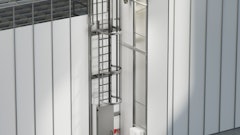
Evaluating resources that improve warehouse operations doesn’t begin in a catalogue or by perusing a website; it starts with a transparent conversation. Senior leaders need to maintain a culture of constant self-evaluation to determine where the workflow pain points are, and then have open and honest discussions with staff about how technology can empower them to do their job. These resources represent an investment that’s tied not just to a company’s bottom line, but to the well-being of the people who are using it. Often, it’s appropriate to first consider technology that impacts how they do their job every day.
As e-commerce continues to skyrocket in utilization, so too do the demands on warehouse workers. Managing inventory and ensuring goods are transported when and where they need to often comes down to maintaining a monitoring infrastructure that’s centered on a singular device: the scanner. This invaluable tool is fundamental in keeping a real-time record of all goods, and how companies manage their scanner usage goes a long way in predicting their operational efficiency.
Unfortunately, many organizations haphazardly store their scanners in unsecured locations like drawers or basic cabinets. This management system is susceptible to lost or stolen scanners, which can be detrimental for a variety of reasons. If there isn’t a monitoring system in place, it can cost managers valuable downtime identifying that a scanner is missing in the first place and then beginning the process of retrieving it. Scanners are also becoming increasingly expensive, with some of the higher-end models costing several thousand dollars. That represents not only a financial burden to an organization if they need to replace them, but a productivity burden as well, as any loss in scanner inventory could mean a less efficient workforce. Furthermore, if a scanner, which often contains sensitive information, ends up in the wrong person’s hands, that could represent a security risk for the company as well.
Fortunately, modern technology like modular asset management lockers exists to help warehouse operators maintain a comprehensive view of all shared asset usage, including scanners. Lockers are integrated into a company’s general access control platform, which means employees can access the locker through their badge, fingerprint, or another credential that is provided to them. All scanners are kept in a single locker with individual compartments, which limits the possibility of them being stored in unsecured locations. For larger warehouses, multiple lockers are installed to reduce the time spent travelling to and checking a device from a locker. Managers assign access to each RFID-tagged scanner inside the locker, which creates an audit trail of who had that scanner last. Lockers also include features like curfews, so if that scanner isn’t returned by a certain time, a manager can be notified.
Furthermore, additional technology exists within each compartment, like charging capabilities. Lockers prioritize which shared device has been charging the longest so that when an employee goes to check it out, they aren’t unknowingly removing a dead device. This not only improves operational efficiency for that day, but also extends the life of these shared assets. Lockers also include fault-logging, so if a scanner has something wrong with it, the user notes that in the locker interface, which automatically removes the scanner until the fault has been corrected. This helps get scanners back in circulation faster and saves money on unnecessary replacement costs. The concept of modern scanner management can be applied to other shared devices like tablets, laptops, and radios, which can be stored in the same mixed-use modular locker.
Smart warehousing practices extend to a company’s fleet vehicles as well, which are the lifeblood of fulfilling the orders of the ever-increasing online marketplace noted above. Just like with shared devices, intelligent key management technology is impacting warehouse operations nationwide by safeguarding a company’s vehicle keys. Keys are secured in modern cabinets, similar to the aforementioned modular lockers, and are accessed by the same employee credentials needed for general building entry. Managers see who has which vehicle and when it was signed out. If a truck isn’t returned by a certain time, the manager is alerted. Also, like with devices, if a truck has a fault with it (i.e. the check engine light comes on, it needs an oil change, there’s a broken taillight, etc.), the key management system locks that key from being removed until that fault has been corrected with the vehicle and a manager releases it in the system. Since the cabinet is integrated with the existing access control platform, managers can produce an audit report at any time, which helps companies stay in compliance with operational regulations.
One of the most important benefits of both modular lockers and key cabinets is the ability for managers to reassign employees to other departments within the warehouse who had previously overseen distributing keys and assets. In a time where labor shortages consistently impact a variety of companies, any technology that can help maximize existing resources, including employees, needs to be prioritized.
While market projections may vary based on industry vertical, it remains clear that warehouse operations are the cornerstone of successful companies, and any inefficiencies within them can negatively impact an entire operation. It’s therefore vital for companies to consistently monitor their operations and be open to considering any resource that represents a positive return on investment. Technology will only continue to develop, and those that aren’t leveraging it to enhance efficiency risk being overtaken by those that harness its true potential.
![Traka Brian Davidson Round[26][19] Headshot](https://img.sdcexec.com/mindful/acbm/workspaces/default/uploads/2025/05/traka-brian-davidson-round2619.xyzWfsBcWR.png?auto=format%2Ccompress&crop=faces&facepad=3&fit=crop&h=48&q=70&w=48)




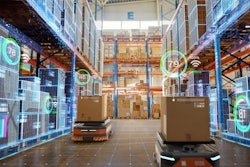


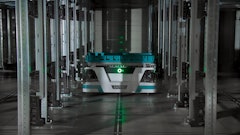




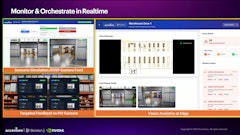

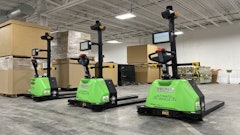

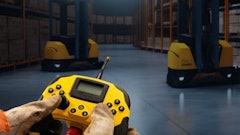
![Pros To Know 2026 [color]](https://img.sdcexec.com/mindful/acbm/workspaces/default/uploads/2025/08/prostoknow-2026-color.mduFvhpgMk.png?ar=16%3A9&auto=format%2Ccompress&bg=fff&fill-color=fff&fit=fill&h=135&q=70&w=240)
